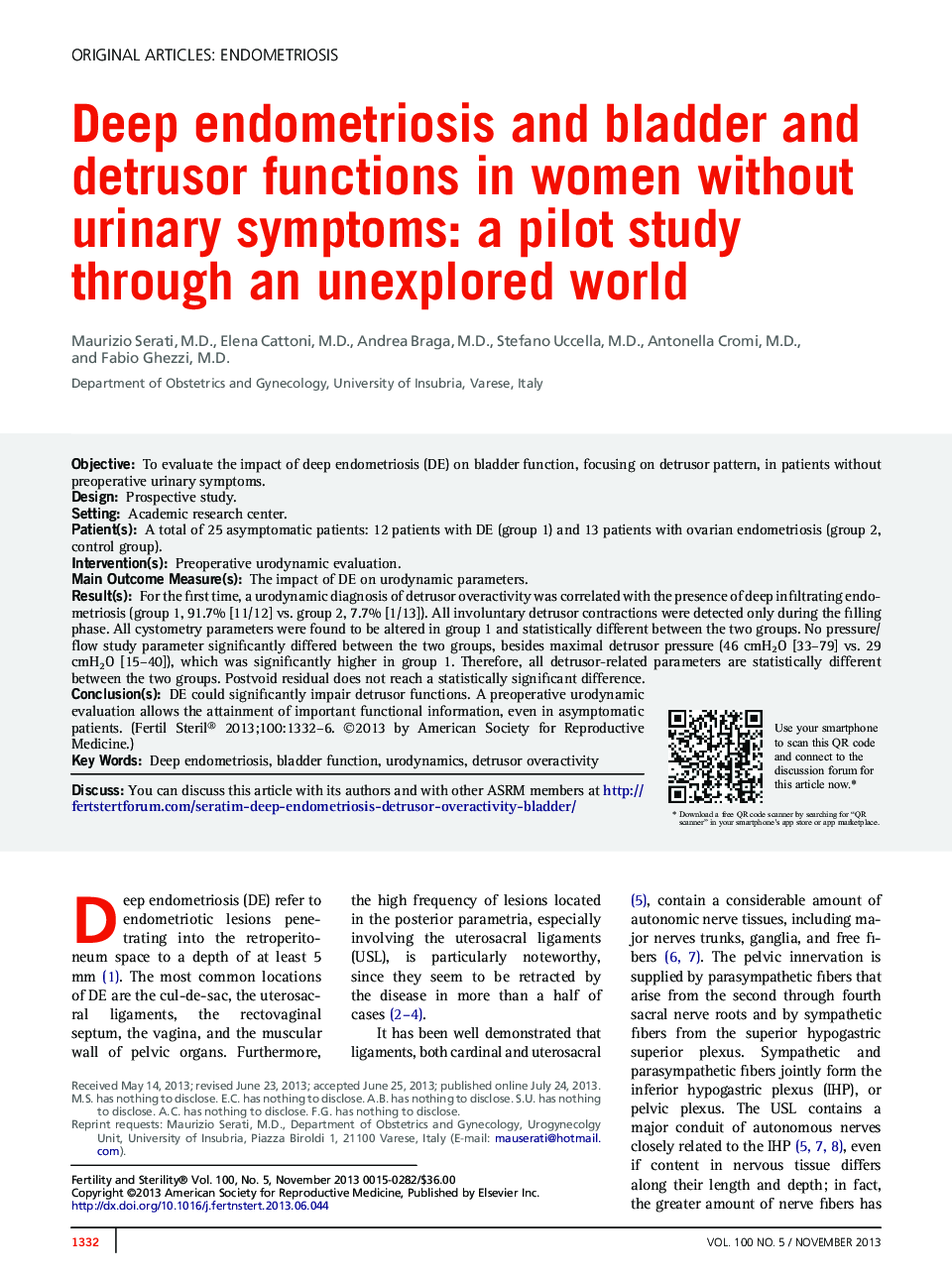| Article ID | Journal | Published Year | Pages | File Type |
|---|---|---|---|---|
| 3938777 | Fertility and Sterility | 2013 | 5 Pages |
ObjectiveTo evaluate the impact of deep endometriosis (DE) on bladder function, focusing on detrusor pattern, in patients without preoperative urinary symptoms.DesignProspective study.SettingAcademic research center.Patient(s)A total of 25 asymptomatic patients: 12 patients with DE (group 1) and 13 patients with ovarian endometriosis (group 2, control group).Intervention(s)Preoperative urodynamic evaluation.Main Outcome Measure(s)The impact of DE on urodynamic parameters.Result(s)For the first time, a urodynamic diagnosis of detrusor overactivity was correlated with the presence of deep infiltrating endometriosis (group 1, 91.7% [11/12] vs. group 2, 7.7% [1/13]). All involuntary detrusor contractions were detected only during the filling phase. All cystometry parameters were found to be altered in group 1 and statistically different between the two groups. No pressure/flow study parameter significantly differed between the two groups, besides maximal detrusor pressure (46 cmH2O [33–79] vs. 29 cmH2O [15–40]), which was significantly higher in group 1. Therefore, all detrusor-related parameters are statistically different between the two groups. Postvoid residual does not reach a statistically significant difference.Conclusion(s)DE could significantly impair detrusor functions. A preoperative urodynamic evaluation allows the attainment of important functional information, even in asymptomatic patients.
